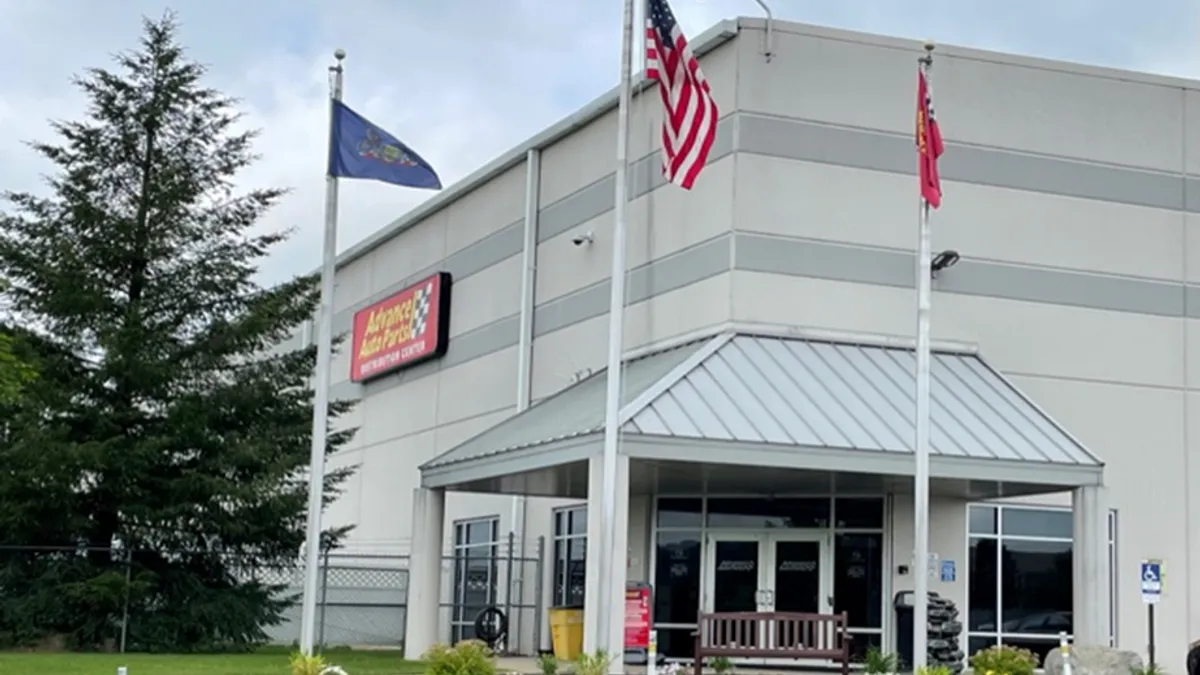Dive Brief:
- Advance Auto Parts has mapped out its new unified distribution network, which is slated to feature 14 large distribution centers, President and CEO Shane O'Kelly said on a Q1 earnings call last month.
- Currently, the auto parts retailer has 13 of the needed replenishment distribution centers, and is now searching for the final location.
- All 14 facilities will average about 550,000 square feet and will “serve as nationwide replenishment nodes,” the CEO told analysts.
Dive Insight:
Advance Auto Parts has been working to consolidate its distribution networks into a single operation to optimize efficiency after historically relying on two distinct networks. The goal of the project is to boost the company’s supply chain network's efficiency and inventory productivity.
Market hubs are the next “component” of the unified network, O’Kelly said, adding that the company has already completed a pilot. The hubs, each of which will hold more than 80,000 SKUs on average, aim to enhance the company’s existing network.
O’Kelly broke down the strategy in three parts, including converting specific existing stores, converting smaller distribution centers and “green-fielding new locations.”
“We have completed four store to market hub conversions, utilizing the learnings from our successful pilot,” he said. “By the end of 2024, we expect to have at least 20 market hubs in operation, including approximately half from the conversion of existing DCs.”
Three distribution center conversions are underway in Louisiana, North Carolina and Tennessee, all of which are expected to be complete by the end of Q3, the CEO noted.
“Importantly, by using existing stores that have sufficient footprint and converting smaller legacy DCs, we believe we can accelerate this initiative with more rigor than if we were to green-field all locations,” he said.
The auto parts retailer operates more than 300 existing hubs, which will continue to offer expanded capacity for surrounding stores. The existing locations have roughly 35,000 SKUs on average whereas “traditional blended box stores” have around 23,000, the CEO noted.
“The performance of our hubs and market hubs reinforces the benefit of having parts closer to customers,” O’Kelly said. “We expect the development of this unified network to take time and are planning to have the 14 large DCs and at least 60 market hubs added to our existing network of hubs by the end of 2026.”















